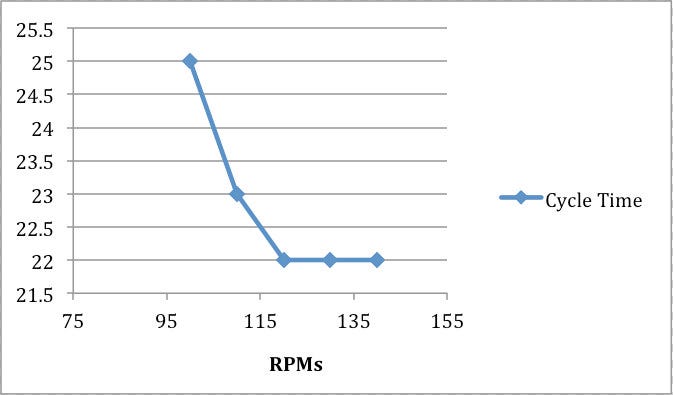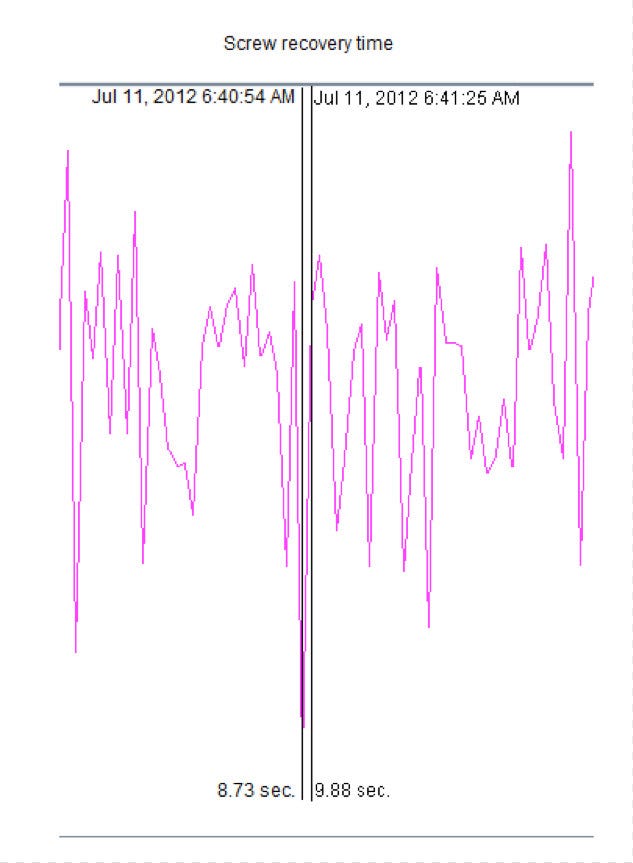Since my last article reviewed a subject covering a fundamental of a robust process, I decided to continue with that theme and cover screw-recovery time.You might think screw-recovery time should be rather simple to set. We could throw out general statements such as "screw-recovery time should be set to finish recovering moments before the mold opens" and leave it at that. Most of the time this would probably work, but this doesn't always hold true. Unless you have performed studies on the recovery time, you might not be aware of the following:
July 19, 2012
Since my last article reviewed a subject covering a fundamental of a robust process, I decided to continue with that theme and cover screw-recovery time.
You might think screw-recovery time should be rather simple to set. We could throw out general statements such as "screw-recovery time should be set to finish recovering moments before the mold opens" and leave it at that. Most of the time this would probably work, but this doesn't always hold true. Unless you have performed studies on the recovery time, you might not be aware of the following:
Some machine manufacturers have a built-in timer that delays the mold opening for up to three seconds after the screw has recovered.
Want to know why? So do I!
To top it off, those same manufacturers don't always inform us of this delay. But regardless of why, as long as processors are aware of it, we can deal with it. There is a simple study that can be done to ensure that the cooling time is not bound by the screw-recovery time. This study should be completed at the start of process development.
Screw recovery chart
Once you have a mold cycling, and you have identified a cooling time long enough to eject parts without distortion, screw RPMs should be set so the dosage is completed 0.50 second before the end cooling time. Back pressure should be set to mimic where you intend to run it in production; I recommend a good starting point to be the low end of the material manufacturer's recommendation.
At this RPM setting, record the cycle time, typically giving the process three to four shots to ensure it stays consistent. Then increase the RPMs by 10%, and once again record the cycle time. Repeat these steps until the cycle time stops decreasing.
If your cycle time does not change after the two data points, there is no need to continue, because your machine does not have any built-in delays. If you see a change in cycle time, complete the study to determine the delay time.
Based on this example, the processor knows that there is a three-second delay programmed into the machine. To ensure that our process remains repeatable, screw-recovery must be completed three second before mold opening. The reason we want to perform this study is because of the normal variation we see in screw-recovery times. Allowing the cooling time to be dependent on the screw-recovery time is not ideal because of the recovery variation, which will ultimately result in shot-to-shot cooling time variation. This example of screw-recovery time shows how much variation can exist shot-to-shot.
If this variation is not identified, you might struggle to keep part dimensions consistent.

Screw recovery time
After the study is complete, you will want to review the parts once again to ensure that no distortion is present, and the parts are ejecting freely. You will also want to review the material manufacturer's RPM recommendations to ensure you are still within the range recommended.Unfortunately machine manufacturers don't always inform the processor of all the hidden settings in an injection molding machine. But understanding them is absolutely key to a robust, repeatable process.
About the Author: Robert P. Gattshall has worked 17 years in the automotive and medical injection molding industries, including 12 years in process engineering and process development. Certified in John Bozzelli's Scientific Injection Molding for more than 10 years, Gattshall has developed more than 600 processes using scientific injection molding principles. Certified in Lean 5S and SMED, Gattshall has also trained more than 50 process technicians and engineers on the principles of decoupled molding.
About the Author(s)
You May Also Like


